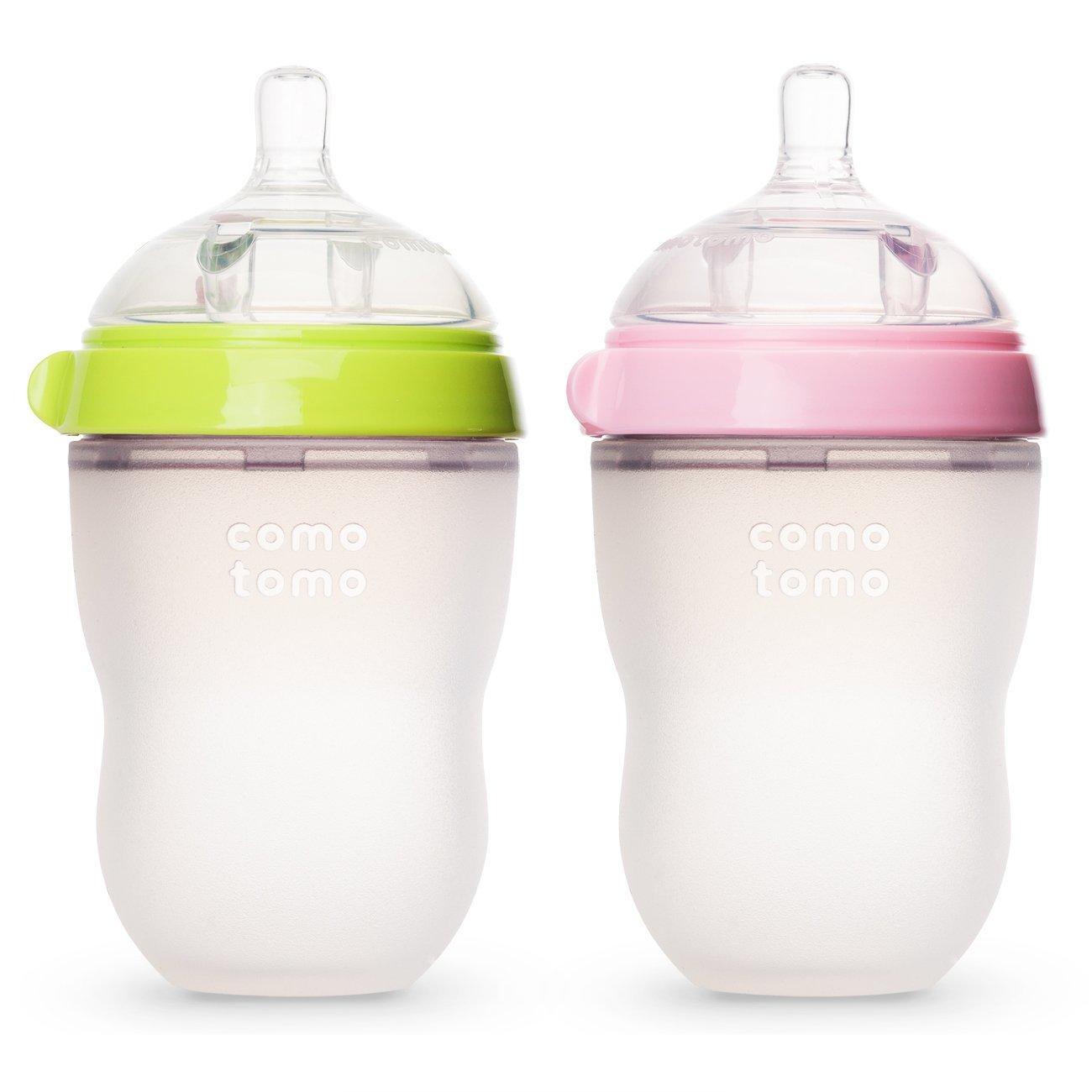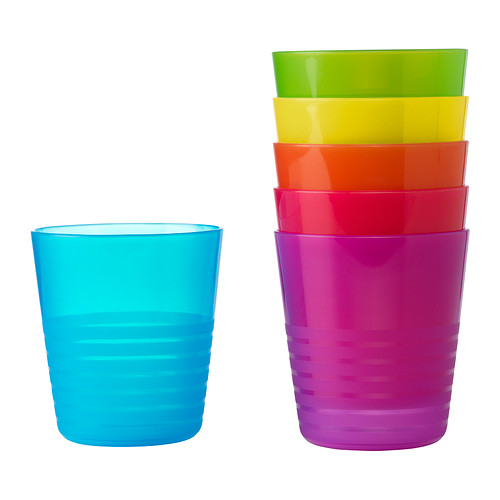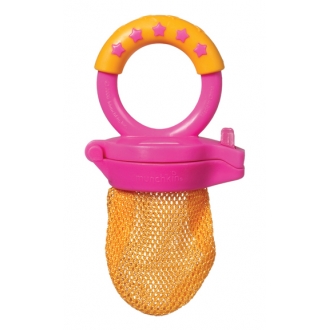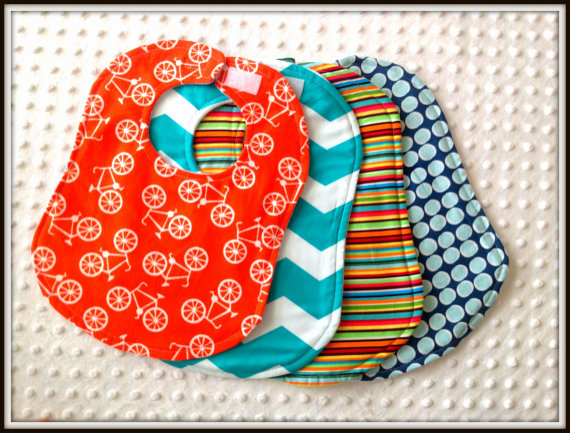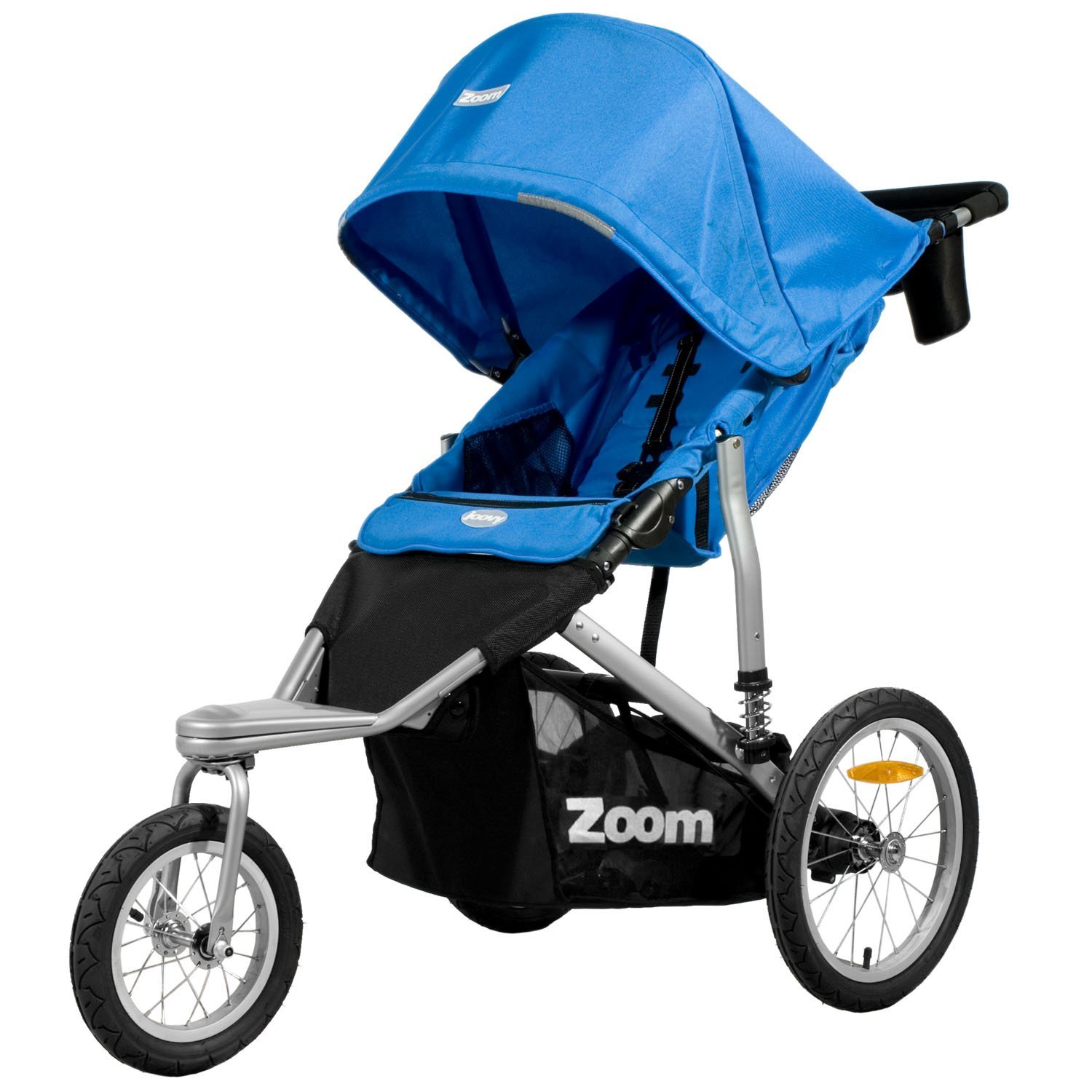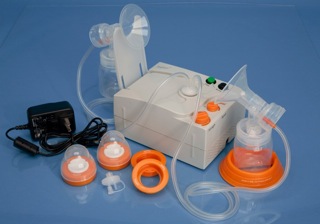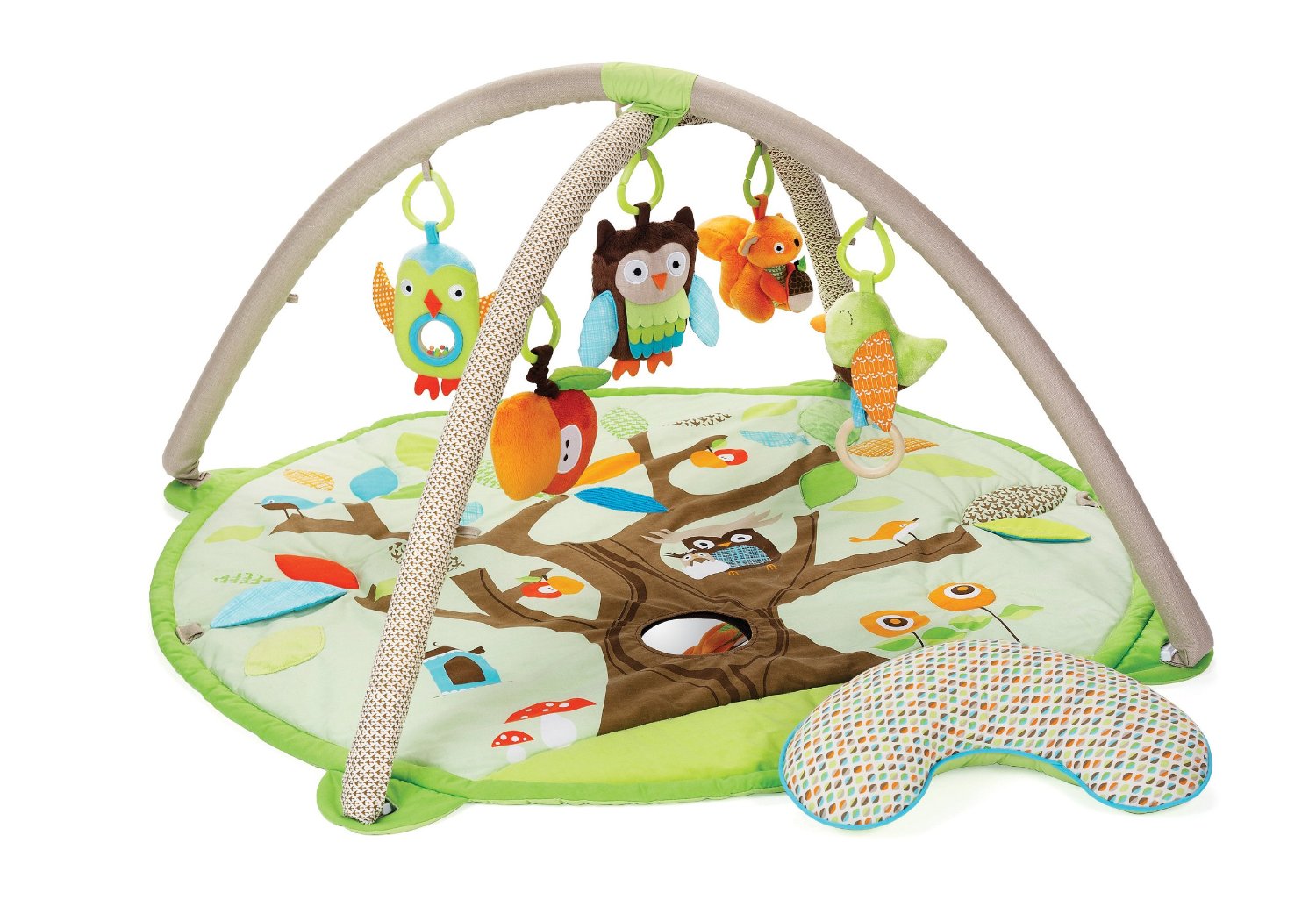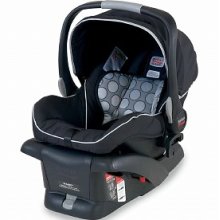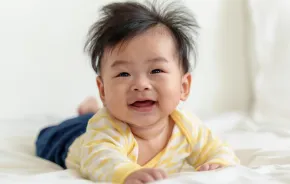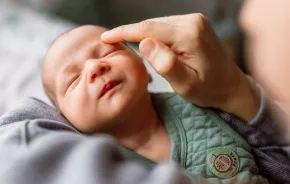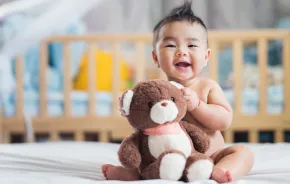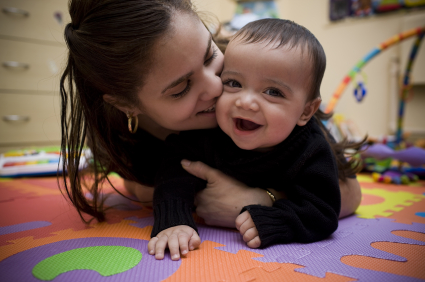 Decision fatigue
Decision fatigue
It is a scene parodied frequently in movies and TV shows: A cheerfully naïve parent enters a big-box baby store, the flame of her confidence quickly extinguished by the towering aisles of baby gear... The daunting prospect of trying to make the right choice from an entire wall of baby bottles. Mind-muddling rows upon rows of car seats, each model claiming superiority. Cribs, jumpers, high chairs, bassinets... Cue horror music. Closeup of deer-in-the-headlights parent. Canned laughter. End scene.
There’s a reason why the quest for baby gear makes for great comedic fodder. The sheer number of products and the pressure to pick the safest and best for our children can be overwhelming. To help demystify the what and why, we asked the experts — a speech therapist, an occupational therapist, a physical therapist and a lactation consultant — to give us input on what they consider to be the most important features of everything from car seats to sippy cups.
Click through to see the list:
- Bottles for babes
- Good to the last drop: Sippy and drinking cups
- Feed me! The ergonomics of eating utensils
- Clean up on aisle three! The dirt on baby bibs
- Eat together as a family
- Stroller savvy
- Need a lift? Best baby carriers
- Breast pumps 101
- Bouncers, swings and activity gyms — Oh, my!
- Car seat safety tips
Best bottles
Are all bottles created equal? Not necessarily. Spokane, Wash. Speech therapist Tammy Spence, who works with infants who have feeding and swallowing problems, recommends that parents take into consideration the nipple shape and flow.
“Nipple flow is important. Younger infants may choke or swallow air if the nipple flow is too fast,” says Spence. “Breastfed infants may prefer wide-based nipples, which better mimic the breast. Bottles with vent systems are also helpful as they cut down on air swallowed, reducing gas and spit up.” Spence recommends parents try a few different bottle types, in case their infant shows a preference for a specific style or brand.
Parents also have the option of clear silicone or yellowish-colored latex nipples. Silicone nipples tend to be more durable making them harder for little teeth to bite through. Latex is softer and more flexible, but can be a potential allergen for some children.
Another factor parents need to consider is the bottle material. Though the controversial chemical Bisphenol A (BPA) was recently banned from use in baby bottles by the Food and Drug Administration, many parents remain hesitant about using plastic bottles. Glass bottles are an option, but with them comes the potential hazard of broken glass. Bottle sleeves may help protect glass bottles from breaking when dropped.
Sippy and drinking cups
By age 1, toddlers should be practicing drinking out of a regular cup. “Sippy cups are fine to use regularly, but exclusively using a sippy cup can increase tongue thrust, which may have an effect on speech,” say Spence. Soft spout cups may also help the initial transition from bottle or breast. After a child is comfortable drinking from a sippy cup, Spence says, it simply becomes a matter of personal preference. “Straws, spouts — I don’t find any particular style superior for typically developing children.”
Feeding utensils
Spence recommends looking for spoons that are more shallow and shorter than a regular dinner spoon. “Shallow spoons are easier for little lips to get around and clear the spoon. Shorter spoons are easier for children to manipulate as they learn to self-feed.”
Look for bowls and plates that have a lip. “The lip enables children to use the side to scoop and keep food on the spoon. The goal is to make it easier for them to feed themselves.”
Spence also recommends bowls with a wider base. “A wider, more shallow bowl helps them see more of the food. Seeing the food provides more sensory input for preparation of the swallow. Sensory input is an important part of the feeding experience for a developing child.”
Spence also recommends biter bags for infants who are just learning to eat solids. “They are a great tool for introducing texture and tastes.”
Let them be messy!
“Do not wipe their face and hands until they are done eating!” exclaims Spence. “Give your child the spoon and let him use his hands. Being messy is an important part of the feeding experience.” This may seem counter-intuitive, but letting children experience the food with all of their senses — including touch — provides important sensory input that may help them process new textures and tastes.

Eat as a family
“Family mealtime is key,” says Spence. “You should eat with your children at the table because they learn by example.”
Family meals aren't just a great way to model proper eating. Research shows that regular family meals can have a measurable positive impact on mental health, obesity risk and academic success. “It’s important to remove distractions, such as television and electronic devices, as well,” says Spence. “Parents aren't just modeling proper feeding skills, but social and language skills.”
Strollers
Jared Hill, a Medford, Ore. occupational therapist with expertise on posture and ergonomics, recommends that parents consider three basic factors when hunting for a stroller:
- The environment it will be used in
- Convenience
- Adjustability
Height-adjustable strollers can make it easier for either parent to tailor the stroller to his or her individual height. “Sustained forward bending and hunching while pushing a stroller that is too short can lead to back strain or discomfort,” says Hill. "Other factors to consider are how heavy it is, how easy it is to fold up and if it fits in your car trunk. Invest in a good stroller. You will usually get what you pay for."
A trip to the mall and an outdoor jog require strollers with very different features. Hill explains, "Larger wheels and sturdier construction are generally better for navigating more rugged outdoor terrain and longer distances. Umbrella strollers are lightweight and fold up compactly. It all depends on how you're using it.”
Many strollers work in conjunction with infant car seats, cutting down on the need to transfer an infant from one seat to another (a feature most parents appreciate when their little one is napping).
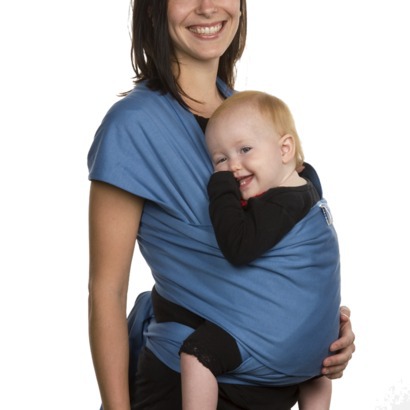
Baby carriers
Selecting and adjusting a baby carrier is comparable to finding and adjusting the right backpack — it’s not one-size-fits-all,” says Hill. “I recommend trying a few different carriers on before buying one, to see what works and what doesn't.”
The size of the infant and the parent’s body shape are also important considerations. “Mothers may want to consider choosing a front or back carrier based upon body composition,” says Hill.
Another factor to consider is the core and back strength of the person carrying the baby. Core strength can often be weakened by pregnancy. “Some people find that carriers with more straps help to distribute the weight more evenly, such as the Ergobaby, which has a strap that wraps around the waist for extra support.” A carrier with wider shoulder straps helps to prevent straps from digging painfully into shoulders.
Breast Pumps
Breast pumps can be expensive, but lactation consultant Renee Beebe points out that compared to formula, using a breast pump can actually save money. “Infant formula can cost from $1,500 to $2,300 per year. A new professional-grade pump can cost up to $400.” But mothers may not have to foot that bill themselves, as insurance companies must now cover the cost of a breast pump under the Affordable Care Act. Beebe offers some tips on getting insurance coverage for a breast pump on her website, The Second 9 Months.
Beebe also points out that mothers should tread cautiously when considering sharing or buying a used breast pump. “According to the FDA, a breast pump should only be used by one woman because there is no way to guarantee the pump can be fully cleaned and disinfected between uses by different women. Breast pumps that are reused by different mothers can carry infectious diseases.”
Some brands, such as hospital-grade pumps or the Hygeia breast pump, allow the filter to be changed so that they can be reused or shared safely. Other features to consider are adjustable speed, adjustable suction, adjustable flange size and a manufacturer's warranty.
Bouncers, swings and activity gyms
Physical therapy doctor Jennifer Herbst of Queen Creek, Ariz. recommends that parents searching for in-depth information on creating the best environment for their baby read the book Building Babies Better, by Roxanne Small. “It gives great insight into how baby gear can influence development,” says Herbst.
“I do not recommend many containers such as walkers, exersaucers, jumpers or swings,” says Herbst. “These products are great if mom needs a quick minute to jump in the shower, but they are not great for a baby’s development. Pushing babies to work on certain skills before they are naturally ready can adversely affect the development of gross motor skills. When a child is placed in a walker or jumper, the visual component of seeing their lower extremities is removed, and this can later affect walking. Containers can also lead a child to kick in their cortical development (vision), and this can affect how the motor pathways in the brain are mapped. Basic learning opportunities are lost when we push babies to do things before they are naturally ready.”
Herbst acknowledges that these products may be perfectly fine for some babies when used in moderation. “With some children, this is fine and no lasting effects will result. But like a game of Jenga, if too many holes are in the base, the whole tower can come crashing down.”
Great alternatives to these products are activity gyms (Herbst notes these are best for children age 6 months and older), which allow an infant to explore various toys without assisting sitting or standing. Herbst points out that sometimes, simpler is better. "Tummy time is the best activity for infants — putting them on a blanket where they can explore their sense of touch and create a mind map of their body is great for supporting gross motor development."
Car Seats
When it comes to car seats, Herbst says the most important rule is that babies stay rear-facing until age 2. “I know it can be difficult for some parents and children who have long legs, but when in an impact, the force will be distributed through the back and posterior muscles verses in a front-facing car seat, where the force of the impact is distributed through the chest and upper trunk.” Injuries in front-facing car seats can be more severe because of this.
Herbst also recommends an infant car seat for babies weighing 20 pounds or less. “I know there are convertible car seats for babies five pounds or more, but I consider infant car seats superior because they are specifically tailored for an infant." She recommends Britax brand car seats, but points out that all car seats must meet certain safety standards.
Car seats that have been in an accident or are six or more years old are not recommended for use. Most car seats have an expiration date printed on them. Over time and normal use, car seat bases can develop hairline fractures, weakening the plastic, and the elasticity of straps can wear out. Safety standards are also continually changing, driven by new research and technology advances.
Car seat recommendations also vary by the age and weight of a child. The National Highway Safety and Traffic Administration (NHSTA) website provides helpful information about safety recommendations for different age groups. The NHSTA stresses that one of the most important aspects of car seat safety is that the seat is properly used and installed. You can find a local certified child passenger safety technician to help find and install the right car seat for your child's age and size.
Author Rory Graves is a slightly neurotic mom to three young children and the Editorial Intern at Parentmap. You can see more of her musings about parenting on her blog Paranoid Stay-at-Home Mom.




